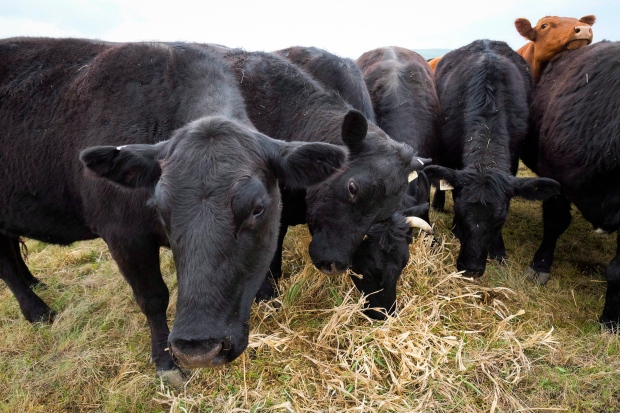Seaweed for cows? Researcher says oceans may provide plentiful livestock feed

It is a long way between prairie ranchland where cattle graze and ocean waters where seaweed blooms, but Canadian scientists want to study whether red algae can one day be used as a sustainable livestock feed
Lauren Krugel – The Canadian Press
It is a long way between prairie ranchland where cattle graze and ocean waters where seaweed blooms, but Canadian scientists want to study whether red algae can one day be used as a sustainable livestock feed.
A paper published in the journal Nature Communications earlier this year determined how exactly the human gut breaks down dietary fibres in a tasty dulse-like variety of seaweed.
Scientists worked with the Canadian Light Source at the University of Saskatchewan — a research centre that uses a light a million times brighter than the sun — to examine four enzymes that digest the seaweed sugars.
“The benefits of aquaculture go on and on”
Wade Abbott, a research scientist with Agriculture and Agri-Food Canada’s Lethbridge Research and Development Centre, said future study will aim to confirm whether the intestines of cows and other animals can convert algae into energy, too.
The research Abbott co-led with the University of Victoria’s Alisdair Boraston honed in on a type of bacteria called B. uniformis NP1.
“It’s a specialized member of our gut community and it has all the enzymes that are required to break up all the different chemical bonds that you find in the sugar,” Abbott said Thursday.
“So it’s able to unlock energy from seaweed cell wall material.”
It’s not known for sure whether the digestive tracts of other animals have those same helpful microbes, but Abbott said he suspects they do.
He noted there is a herd of sheep that live on a beach on an island in northern Scotland that munches solely on seaweed.
The foods animals eat tend to determine which gut bacteria flourish, and changes can happen rapidly when something new is added to their diet.
“That’s what remarkable about communities that colonize animal intestines,” said Abbott. “They’re so adaptive, they’re so diverse.”
Seaweed would be a good alternative to grains in livestock feed that could help solve a lot of problems in agriculture, Abbott said.
A major challenge is balancing a booming population and appetite for meat with shrinking arable land and fresh water.
“Seaweed in that sense is actually remarkable because it grows in the ocean, so you’re not competing with land required for human food,” said Abbott.
“It doesn’t require fresh water. It doesn’t require arable land. It’s loaded with micronutrients. It has a rapid growth rate. The benefits of aquaculture go on and on.”
If it turns out livestock can indeed digest seaweed, the cost of processing it at a large scale and transporting it inland remains a challenge.
And it’s not clear how to make it appetizing to farm critters, said Abbott.“They will eat it, but you have to research what the right mixture is and how to optimize intake.”












